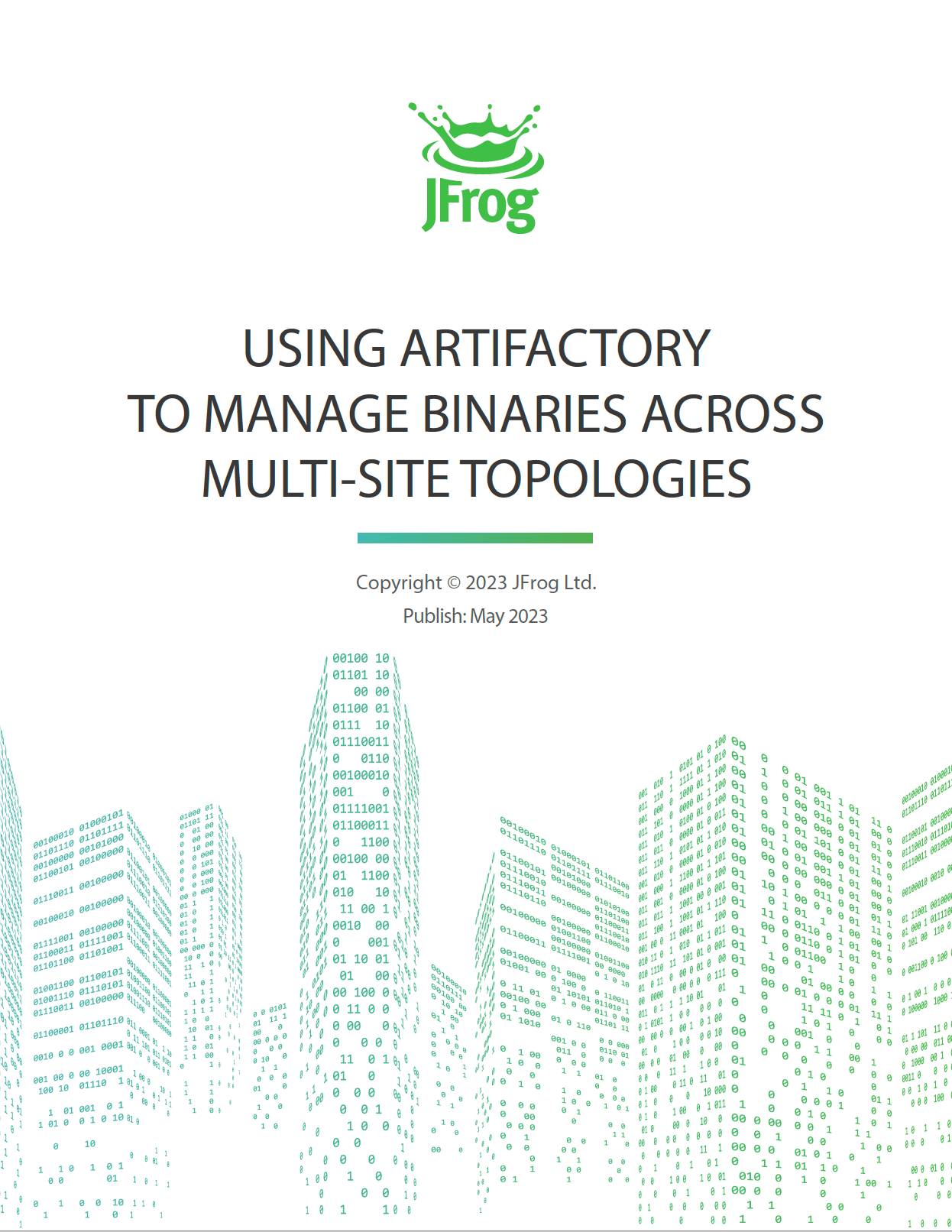Replication: Using Artifactory to Manage Binaries Across Multi-Site Topologies
INTRODUCTION
The days when applications were created by a small team of developers in one room are long past. Enterprise software development is now a highly collaborative endeavour of packages shared by intersecting teams across multiple sites spread across the world.
Global, multisite collaboration requires an architecture for managing software artifacts and deployable packages that is also global in scale.
Compute Locally, Develop Globally
Performance over a network degrades steeply as sender and receiver are farther apart. For an organization with development teams across the world, it’s critical to make sure that network issues like latency, bandwidth limitations, or connection outages don’t harm productivity.
To always build at top speed, all the parts needed to build an application should be physically near to where the build work is done, including shared resources such as external and internal dependencies. When sharing these artifacts across multiple sites, they need to be available locally at each site, either within the local network (on-premises) or in the same region (cloud). This requires multisite topologies that can locally synchronize a global set of shared artifact repositories, so that every build, at every site, can complete fast, without fail.

Artifactory for Multisite Development
Artifactory’s unique set of multisite capabilities ensure locality in any network topology:
Federation of repositories is JFrog’s innovative technology for bidirectional mirroring between enterprise repositories in different installations of Artifactory. When an Artifactory repository is joined to a repository in Artifactory at another site, artifacts pushed to one are automatically duplicated in the other. When properly configured, this can fulfill a full mesh topology across multiple sites.
Replication of repositories offers a variety of topology choices, depending on your needs. These include both push and pull replication topologies, as well as scheduling strategies such as on-demand, on-schedule or event-based replication.
We’ll describe the best practices in architecture and use for each of these capabilities in JFrog Artifactory Pro and Enterprise editions.
TABLE OF CONTENTS
INTRODUCTION
Compute Locally, Develop Globally
Artifactory for Multisite Development
THE JFROG PLATFORM AND MISSION CONTROL
FEDERATING REPOSITORIES
Scaling Globally with Federated Repositories
Easy Administration
Scalable for the Enterprise
Secure Circle of Trust
HOW TO IMPLEMENT FEDERATION TOPOLOGIES
Star Topology
Full Mesh Topology
REPLICATING REPOSITORIES
Push Replication
Scheduled
Event-Based
Pull Replication
Scheduled
Event-Based
Comparing Replication Types
HOW TO IMPLEMENT REPLICATION TOPOLOGIES
Star Topology
Event-based multi-push replication
Event-based Pull replication
Star topology using Event-based pull replication
Star topology using Event-based multi-push replication
Full Mesh Topology
Single Local Repository Pushed Between Two Sites
Single Virtual Repository Consisting of a Local and Remote Repository
Single Virtual Repository Consisting of Two Local Repositories
Single Virtual Repository Consisting of one Local and Multiple Remote Repositories (Pull Replication)
Single Virtual Repository Consisting of Multiple Local Repositories (Multi-Push Replication)
Full Mesh topology using Event-based pull replication
Full Mesh topology using Event-based multi-push replication
Single Local Site with Artifacts Replicated
Geo Synchronized Topology
RECOMMENDED CONFIGURATIONS
CONCLUSION




